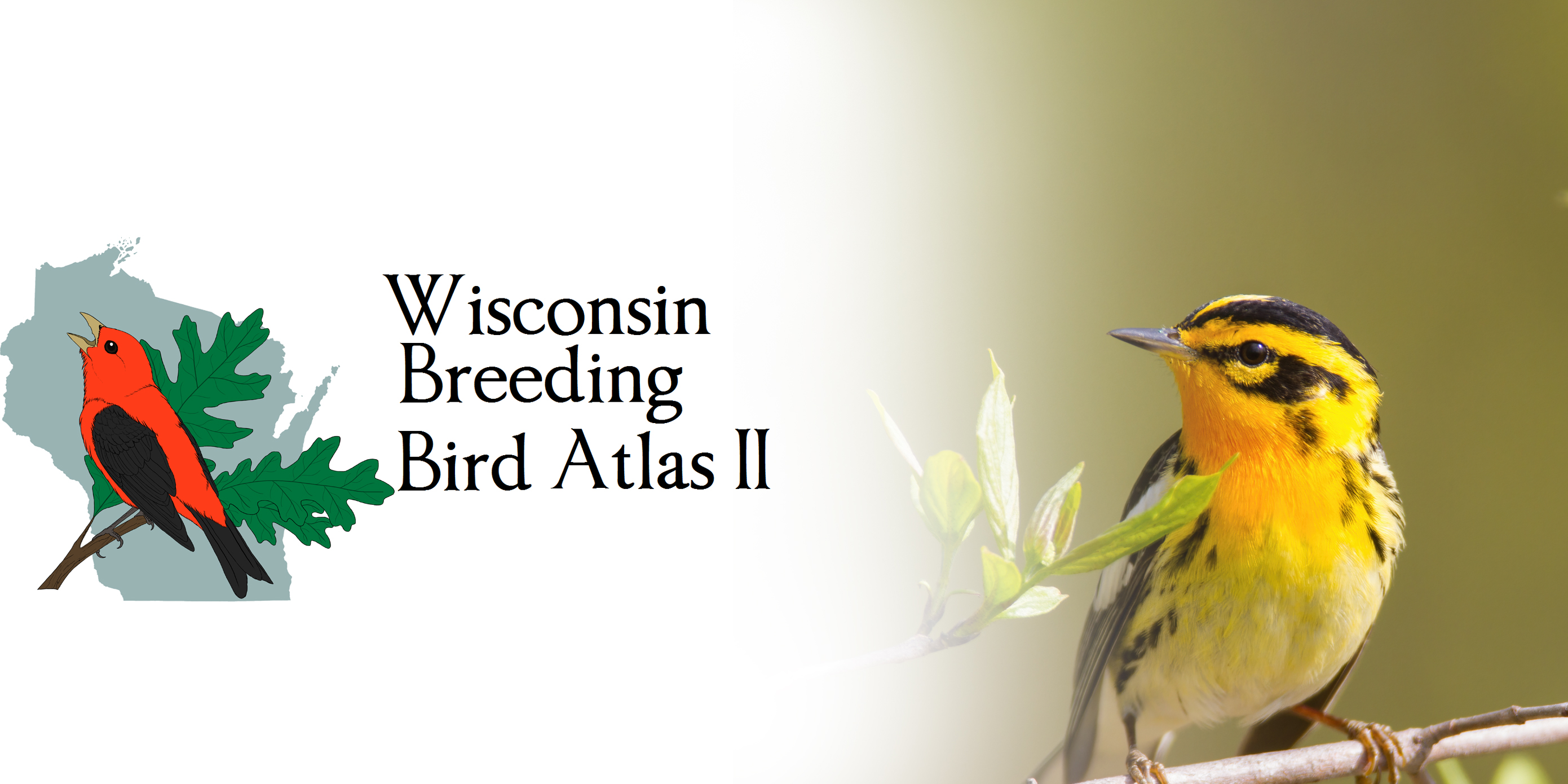The Breeding Bird Atlas concept originated in Great Britain during the late 1960’s and soon expanded throughout Europe. The first Breeding Bird Atlas attempt in North America occurred in Montgomery and Howard counties, Maryland. Several other counties embarked on Atlas projects shortly thereafter, followed by the first statewide atlas in Massachusetts in 1974. Today, nearly every state in North America has completed a Breeding Bird Atlas, and several have completed or are collecting data for their second Atlas effort.
A Breeding Bird Atlas is a comprehensive field effort that documents the distribution and abundance of the birds breeding in a state. This provides a baseline dataset from which to measure future changes in bird populations, as well as help identify the conservation needs of breeding birds. Breeding Bird Atlases are considered comprehensive because of their large coverage area - county, state or country. To conduct a survey at such a large scale, the area must be divided into smaller sampling units. For Atlas projects, USGS topographical quadrangle maps are divided into six equal “blocks” of approximately 10 square miles each. Atlas projects select one of these six blocks to be thoroughly surveyed. These “Priority Blocks” form the basic sampling unit of an Atlas. Volunteer field observers are assigned Priority Blocks and then instructed to visit all of the habitats within the block, visit at different times throughout the breeding season, and spend a minimum of 20 hours recording bird observations for a particular block. Although the emphasis for Atlas data collection is documenting breeding evidence for bird species within each Priority Block, Atlas projects may collect additional data about a species' abundance and habitat requirements. The fieldwork portion of an Atlas project typically takes 5-6 years to complete.
Atlas projects are accomplished by thousands of volunteer field observers over multiple years. Volunteers range from professional ornithologists and researchers to members of local bird clubs, Audubon chapters, nature centers, and the general public. A Breeding Bird Atlas, therefore, represents a large, coordinated citizen science effort with positive impacts to bird conservation.
The Wisconsin Breeding Bird Atlas
The first Wisconsin Breeding Bird Atlas (WBBA) was initiated by WSO in 1995 and supported by numerous other agencies, nongovernmental organizations, academic institutions, and private foundations. The WBBA represented the largest coordinated field effort in the history of Wisconsin ornithology. An estimated 1,600 people contributed to the project between 1995 and 2006, which exceeded the participation level of nearly all other statewide atlas projects.
During the six-year survey period (1995-2000), field observers documented 237 bird species, with 235 of those listed as at least probable breeders in the state. Results from the WBBA provided many insights into Wisconsin’s bird community. For example, seven bird species that were not previously known to nest in Wisconsin were confirmed as breeding species. These included Western Grebe, American White Pelican, Trumpeter Swan, Black-necked Stilt, Great Black-backed Gull, Philadelphia Vireo and Rusty Blackbird. Range expansions were documented for Canada Goose, Hooded Merganser, Wild Turkey, and Osprey whereas range contractions were recorded for Ruffed Grouse, Spruce Grouse, Greater-Prairie Chicken, and American Bittern. New nesting locations were discovered for several species of conservation concern, including Henslow’s Sparrow, Yellow-breasted Chat and Yellow-headed Blackbird. All of the breeding information obtained during the WBBA was published in the “Atlas of the Breeding Birds of Wisconsin” book in 2007. A WBBA website also contains the distribution maps for all species, a photo gallery, and a library of audio recordings from Wisconsin’s birds.
Why Conduct a Second Breeding Bird Atlas?
Educators, researchers, scientists, agencies, and others have made extensive use of WBBA data in a variety of ways. Information obtained during WBBA has helped shape research agendas, funding priorities, bird monitoring programs, and many other critically important dimensions of bird conservation. Atlas data have helped to identify priority land acquisition sites based on the breeding records of special status bird species. WBBA results also provide a baseline from which to measure changes to bird populations, thus laying the foundation for adaptive management. Given the dynamic nature of the natural world, it is important that we continually monitor its response to climatic, biotic and anthropogenic changes. The data from the first Atlas project are now more than 15 years old and may no longer accurately reflect Wisconsin’s bird community. This provided the impetus for bird conservation partners to initiate an update – Wisconsin’s second breeding bird atlas. The second Atlas project will provide a new snapshot of Wisconsin’s bird community, and also the opportunity for quantitative analysis of change in species distribution. Knowledge gained from a second Atlas, when combined with the wealth of information coming from the scientific community, can only serve to facilitate a more robust approach to addressing bird conservation. And perhaps most importantly, a second Atlas project will help to elevate public awareness of nature and directly connect Wisconsin’s citizens to conservation.
